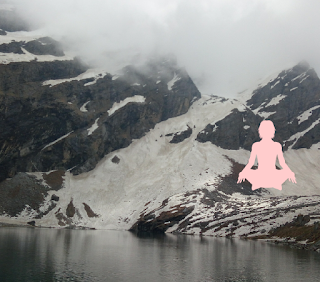Parkinson's dsease |Yoga can help control the symptoms of parkinson's | Easy asans, pranayama and mediation
Parkinson’s disease is a
degenerative disorder of the central nervous system characterized by tremor and
impaired muscular coordination; and affects dopamine- a monoamine
neurotransmitter found in the brain and essential for the normal functioning of
the central nervous system. It releases
neurons in the human brain which restrict the balanced functioning of the
nervous system by depleting neurons in the brain which in turn weakens the
ability of a person to concentrate and balance the mind-body to do work
normally. It disturbs the mental and physical harmony of a person and is
considered the 14th top reason of mortality in the world. Common
indicators of this diseases are tremors in jaw, face, hands and arms; and even
when the body is at rest. Second indicator is stiffness and rigidity in the
muscle’s movement.
Symptoms of Parkinson’s disease:
masked face, back rigidity, tremors in the legs, hand tremors, reduced arms
swing, stooped back, slightly flexed hip and knees, sleep problems and loss of
smell.
When
you constantly do yoga, both in the morning or evening, just 20 minutes, you
will see good results of it. Body foretells the onset of any diseases.
Following a regular workout regime helps to keep muscles active and can reduce
muscle stiffness as well as strengthening the ability to move muscles properly.
Intake of caffeine and vitamin D, vitamins B12 and B6, zinc and omega 3 fats also
may protect a person from early onset of this diseases. Yoga provides the
following set of asanas, pranayama and meditation that can help you:
·
Sarvottan,
Skandh chalan, Pag chalan, Nabhi chalan, Janu Prasar, Nadi chalan and Bal
Machlan,
·
Youvan
Tatva ke Sadhan- Griva chalan, Kati chakra, Bhuja chakra and Jangha chalan,
·
Janushir
asana, Vajra asana, Padam asana, Sarpa asana,
·
Pranayama,
shav asana and meditation.
Asanas, pranayamas, mudra and
meditation boost your energy and keep alive prana energy flow within body
properly.
Everything in and round us is
Prana or energy. Life pressure or electricity or pranic energy is the
substratum and essence of all life, which makes lifestyles feasible at the
fabric stage. The prana is one yet it performs many functions in the body that occupy
certain places within body and hence has five names: prana, apana, samana,
udana and vyana. Pranayama purifies Nadis, of which there are more than 72000
known as astral Nadis which cannot to be seen by the naked eye. So by controlling the act of breathing
you can efficiently purify the Nadis and gain control over it. This process
by which the prana is controlled by regulation of breath is known as pranayama:
rhythmical breathing, Suryabheda, ujjayi, Sitali, Sitkari, Bhastrika and Nadi
shudhi. Pranayama is the chief constituent of yoga, known as the technique of
breath control; it enhances the strength of pranas, nervous system and organs.
Pranayama prolongs life and provides more oxygen to brain and heart that
enables and begets activeness, lightness, flexibility, stamina and strengthens
in all the major and minor organs of the body within a few days of practicing
it.
Meditation gives a significant
experience of calm and well-being within five minutes because the cycle of
breath links you to the rhythms of creation within you and with the cosmic
prana energy. Meditation keeps the brain in an energised and balanced state of
being; keeping balanced the pituitary glands and pineal glands, melatonin is a hormone produced in the pineal gland, enhancing dopamine
efficiency, and keeps balancing amygdala. Amygdala is an almond-shaped
neural structure in the anterior part of the temporal lobe of the cerebrum;
intimately connected with the hypothalamus and the hippocampus and the
cingulate gyrus; as part of the limbic system it plays an important role in
motivation and emotional behaviour.
Gradually, you will get a feel
for the act of sitting in silent stillness and will be able to increase the
time limits further easily enthusiastically. Ten minutes of keeping in deep
meditation is equal to six hours of sound sleep and where oxygen consumption
falls to its lower level in meditation provides good results. Meditation
increases tissue mass in the area of the brain of controlling impulses and
maintaining attention swiftly, increased thickness in the state of the brain is
accountable for body awareness, enhanced focus and stress management as well as
keeping the amygdala in balance. There is a direct relationship between the
breath and senses. These five senses are hear, smell, taste, sight and
touch. Prana energy is entirely
dependent upon the breathing frequency.


Very nice and helpful information
ReplyDeleteVery nice
ReplyDelete